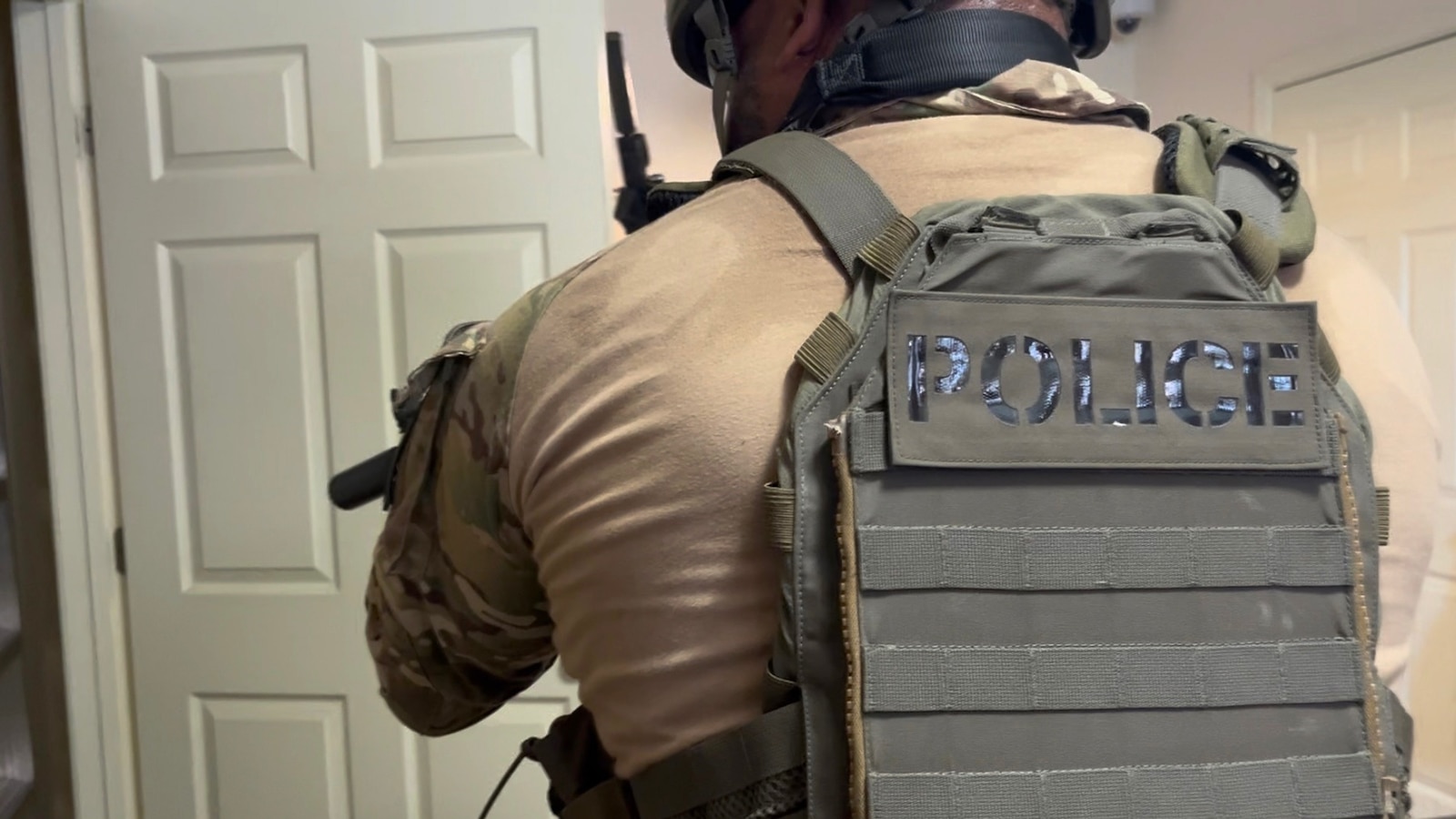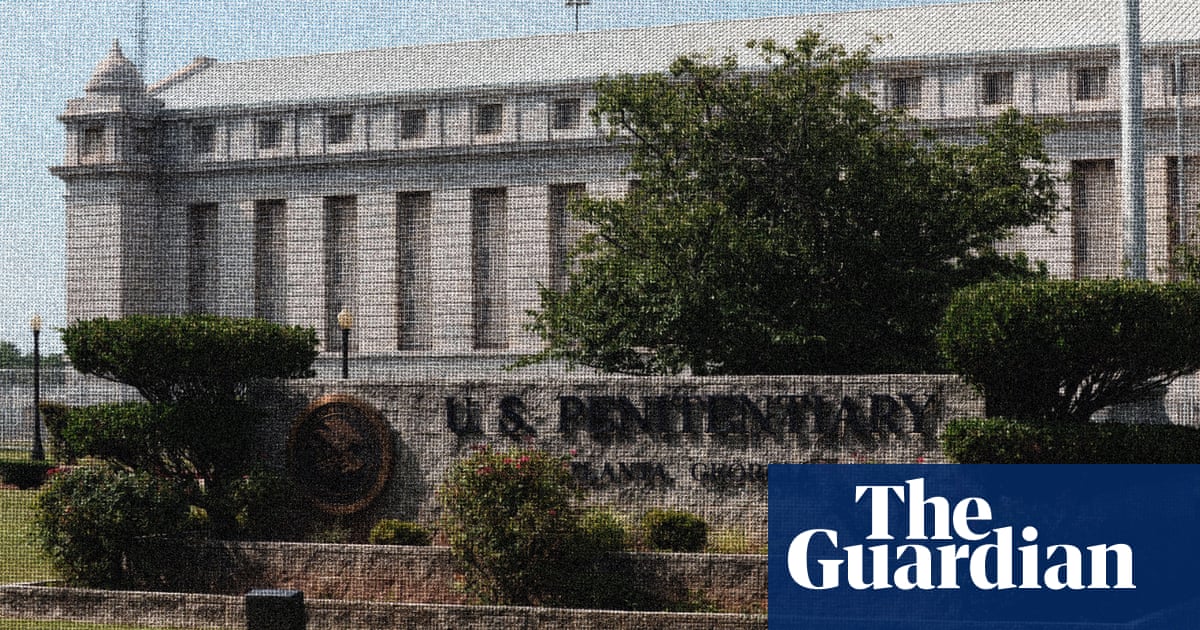U.S. Immigration and Customs Enforcement officials handcuffed Jorge Willy Valera Chuquillanqui as he walked out of his court hearing in San Francisco recently and placed him in an eighth-floor cell at a downtown field office with no bed. He spent the next four days there with six other detainees before being sent to Fresno and eventually to a larger facility in Arizona.
“It was hell,” the 47-year-old Peruvian man said. His meals were granola bars and bean-and-cheese burritos, and at one point had to be transferred to a hospital after he started feeling pain related to a stroke he suffered a year ago.
“I’ve never experienced something like this, not even in my own country,” Valera said.
As President Donald Trump’s mass deportation efforts ramp up and immigration authorities strive to meet an arrest quota of 3,000 people per day, detention centers continue to fill up, leading to overcrowding in some cases. As of July 27, just under 57,000 people were being held at detention centers compared to just under 40,000 people in January, according to TRAC Immigration, a data gathering nonprofit organization.
Immigration attorneys say that as a result, they’ve seen an increase in ICE holding people at its 25 field offices across the country for extended periods of time – raising concerns that the facilities are ill-equipped for people to sleep in, and lack medical care for those who need it and privacy to use the bathroom.
The situation has prompted legal action from immigration advocates across the country. In the Bay Area, lawyers have raised concerns about the conditions of the offices as holding centers and are looking into taking legal action.
Until recently, ICE limited detentions in field offices such as that at 630 Sansome St. to 12 hours “absent exceptional circumstances,” but increased that to 72 hours earlier this year after Trump ordered mass deportations.
ICE said in a statement to the Chronicle that there are occasions where detainees might need to stay at the San Francisco field office “longer than anticipated,” but that these instances are rare.
“All detainees in ICE custody are provided ample food, regular access to phones, legal representation, as well as medical care,” the agency said. “The ICE field office in San Francisco is intended to hold aliens while they are going through the intake process. Afterwards, they are moved to a longer-term detention facility.”
ICE did not respond to questions about what kind of medical staff the agency has at its San Francisco facility, its only field office in the Bay Area. The second nearest field office is in Sacramento. Other field offices in the state are located in Los Angeles, San Diego and other parts of Southern California.
In a memorandum filed in court in June, ICE said that the agency increased its detention limit at field offices to 72 hours to meet the demands of increased enforcement. ICE stated that increased enforcement efforts have strained the agency’s efforts to find and coordinate transfers to available beds, and that it is no longer permitted to release people.
“To accommodate appropriately housing the increased number of detainees while ensuring their safety and security and avoid violation of holding facility standards and requirements, this waiver allows for aliens to be housed in a holding facility for up to, but not exceeding, 72 hours, absent exceptional circumstances,” the memorandum states.
After the passage of Trump’s policy legislation, ICE’s annual budget increased from $8 billion to about $28 billion – allowing the agency to hire more enforcement officers and double its detention space. While there are no detention centers in the Bay Area, ICE is poised to convert a 2,560-bed facility in California City (Kern County) into a holding facility. Immigrant advocates are worried that FCI Dublin, a former women’s prison that closed after a sexual abuse scandal, could be used as a detention center, but a spokesperson for the Bureau of Prisons told the Chronicle there are no plans to reopen the prison.
Meanwhile, some immigrant advocacy groups are starting to take action against ICE for using its field offices as holding facilities.
In Baltimore, an immigrant advocacy group filed a federal class action lawsuit in May on behalf of two women who were held at ICE’s field offices in “cage-like” holding cells for multiple days. A judge denied the group’s request for a temporary restraining order, but attorneys said they intend to try again.
“They have no beds, a lot of them have no showers, they are not equipped to provide medical care or really provide food because it’s not designed to be a long-term facility,” said Amelia Dagen, a senior attorney at Amica Center for Immigrant Rights, a Washington D.C.-based nonprofit that filed the lawsuit.
“We have heard this is not exclusive to Baltimore and is happening quite a bit in other field offices. This is an ongoing issue unfortunately because with arrest quotas being what they are… everyone is a priority,” Dagen added.
Jordan Wells, a senior staff attorney at Lawyer’s Committee For Civil Rights in San Francisco, said he and other attorneys are examining the Maryland case. Wells has filed habeas petitions on behalf of two people who were initially held at Sansome Street. A judge ordered the temporary release of one of his clients and a court hearing is scheduled for later this month for the second person, who has since been transported to a detention center in Bakersfield.
A separate class action lawsuit seeking a temporary restraining order against the Department of Homeland Security to stop raids in Los Angeles said that ICE is holding people in a short-term processing center in the city and a basement for days – describing the conditions of the “dungeon-like facilities” as “deplorable and unconstitutional.” A judge granted the temporary restraining order last week.
Immigrant advocates have criticized ICE for detaining more people than they have room for, saying that their strategy is devastating communities.
“If there is bed space ICE will fill it, and that means more terror for local communities,” said Jessica Yamane Moraga, an immigration attorney at Pangea Legal Services, which provides services to immigrants.
It remains unclear exactly how many people have been held at ICE’s San Francisco field office.
Moraga said she saw six people held at the San Francisco ICE field office for at least three days. She represented a 27-year-old Colombian woman from San Jose who was detained at the office for nearly four days.
When ICE arrests people in the Bay Area, they typically are taken to the San Francisco field office for processing and then transferred to a detention center, usually in Southern California. However, as beds fill up, many people are starting to be transferred to centers out of state.
Earlier this year, ICE started detaining people leaving their court hearings. Moraga said that when people are detained on Thursday or Friday by ICE at 630 Sansome St., which has three courtrooms and a processing center, authorities are sometimes unable to find a long-term detention facility to transport people to until after the weekend.
“ICE is deciding to use the blunt instrument of detention to turn away people who have lawful claims,” Moraga said.
Lawyers, legal advocates and migrants reported substandard conditions at ICE’s field offices.
Three days after Valera, the Peruvian migrant, was detained, Ujwala Murthy, a law student and summer intern at nonprofit Pangea Legal Services, visited him at the ICE field office.
As she was preparing to leave, she heard a loud pounding. She said she saw multiple women, apparently in detention, banging on the glass window of a door behind the front desk. A security guard came. One of the women reported that somebody was overheating. That day, it was hotter inside the field office than outdoors, she said.
Security personnel unlocked the door and Murthy said she saw a woman in a white track suit step out flushed and sweating, looking distressed. The woman was given a bottle of water and led out of Murthy’s sight.
“It made me upset,” she said. “It was very dehumanizing.”
At Valera’s asylum hearing before he was unexpectedly detained on July 25, an ICE attorney had tried to dismiss his case, part of a new Trump tactic to speed up deportations. The judge declined and continued the case to October to give Valera time to respond. But minutes after exiting the courtroom, ICE officers seized him.
In his cell at the ICE field office, he started feeling pain in the left half of his body that was paralyzed from a stroke a year ago, according to a habeas petition his attorney filed. He said he urged ICE to get him medical care and was eventually transported to San Francisco General Hospital, but returned to custody at the field office a day later.
Valera, who crossed the border in December 2022 after fleeing his home in Peru where he received death threats from an organized criminal group, was eventually transported to Fresno and then Arizona to be held in detention. He was released last month after a judge granted him a temporary restraining order.
“I’m going to ask my lawyer to help me go to therapy,” he said, “because I am traumatized.”



